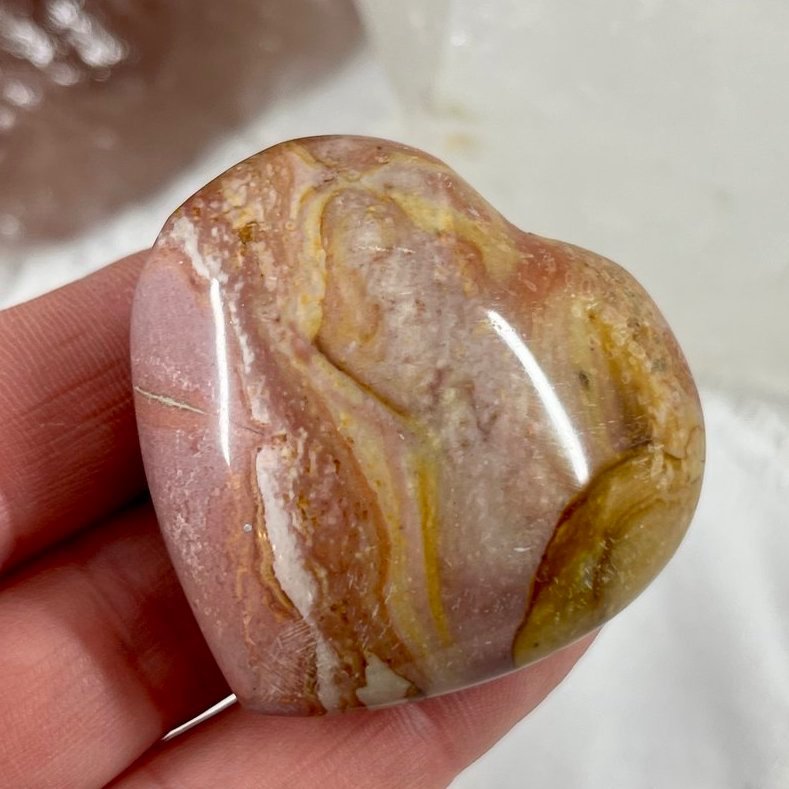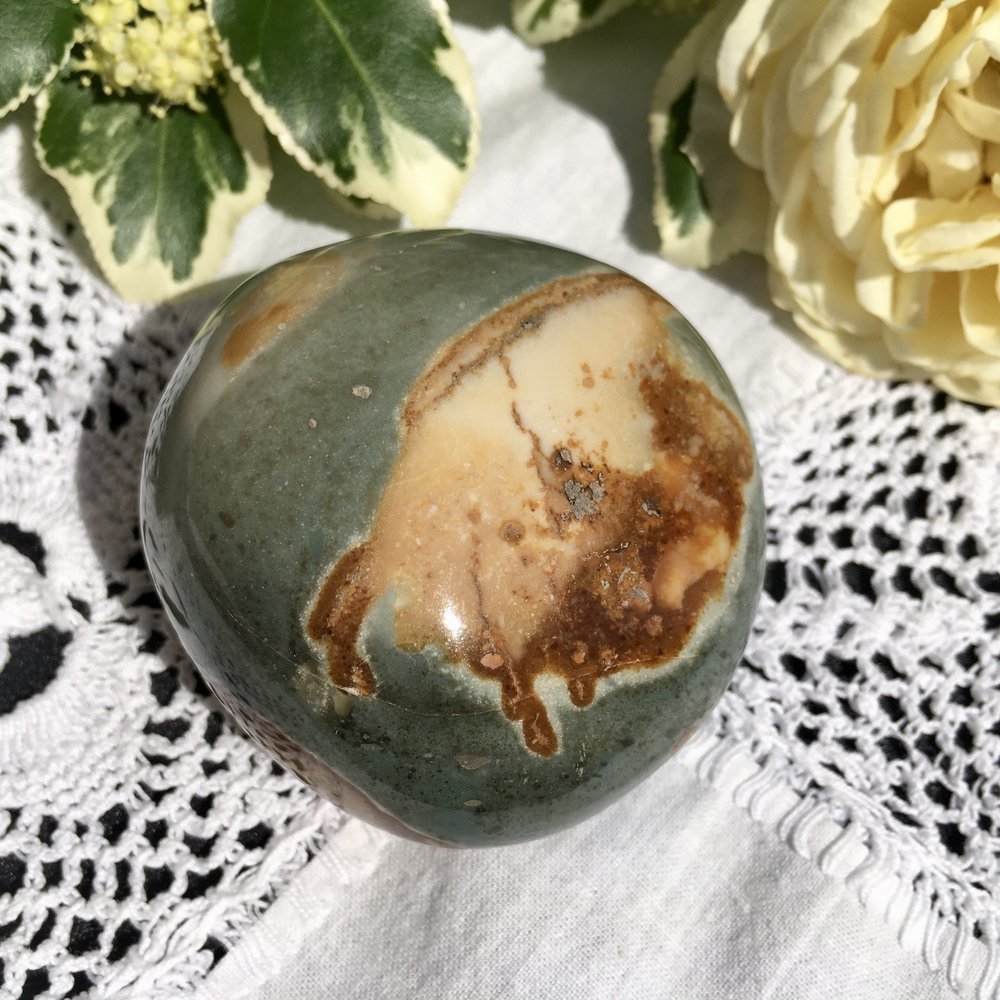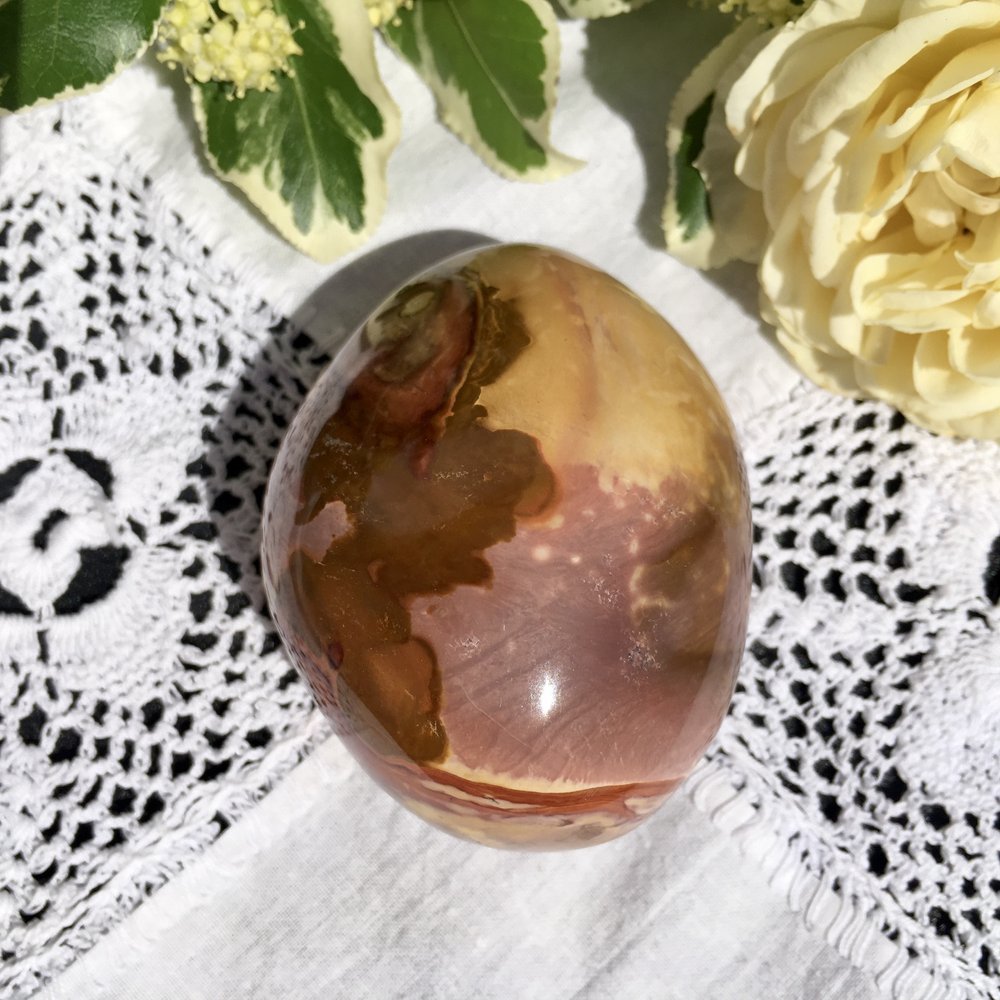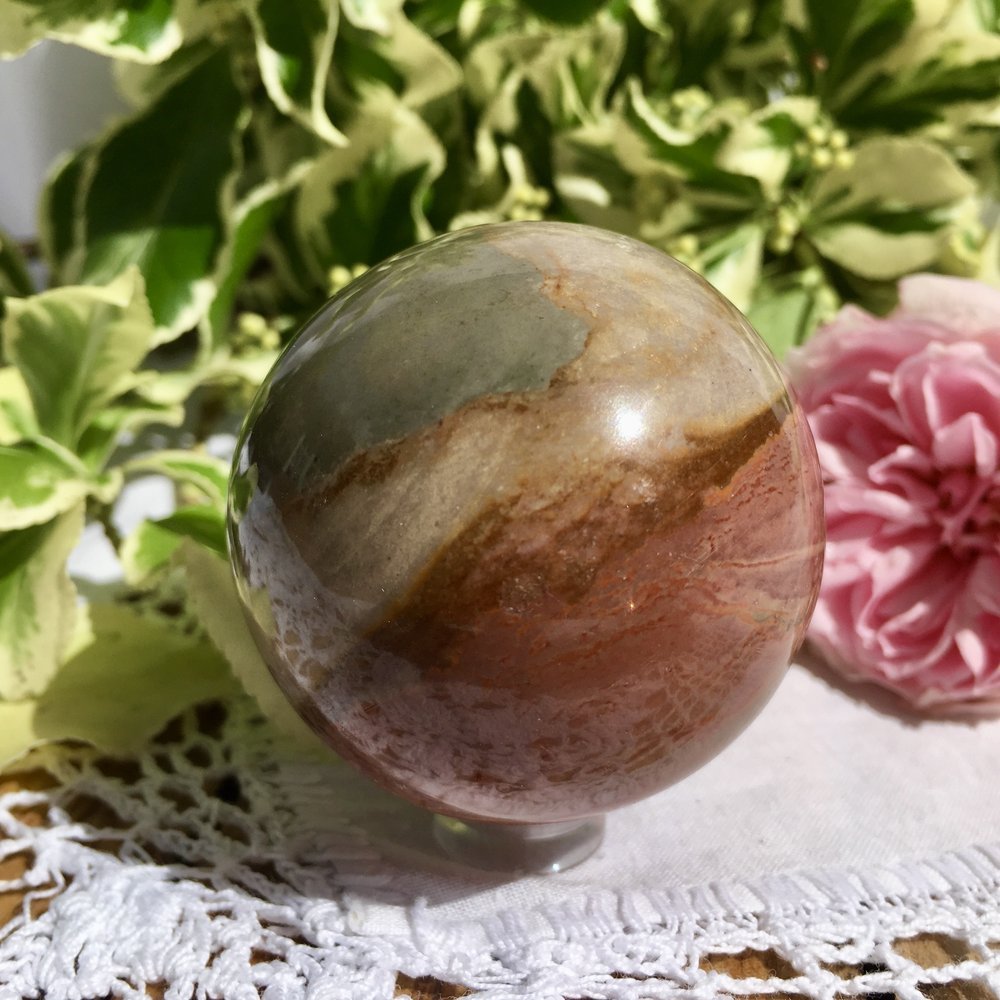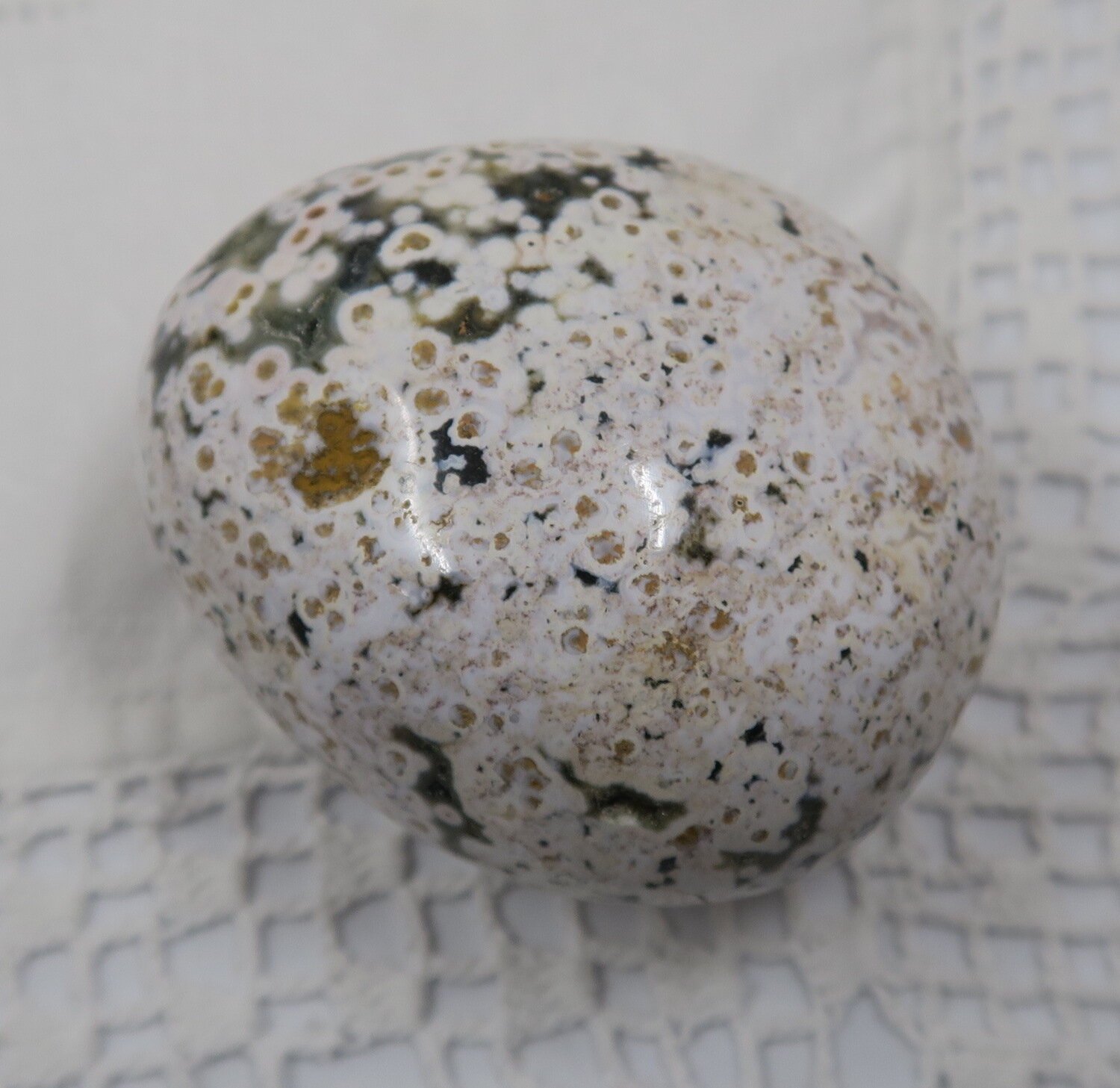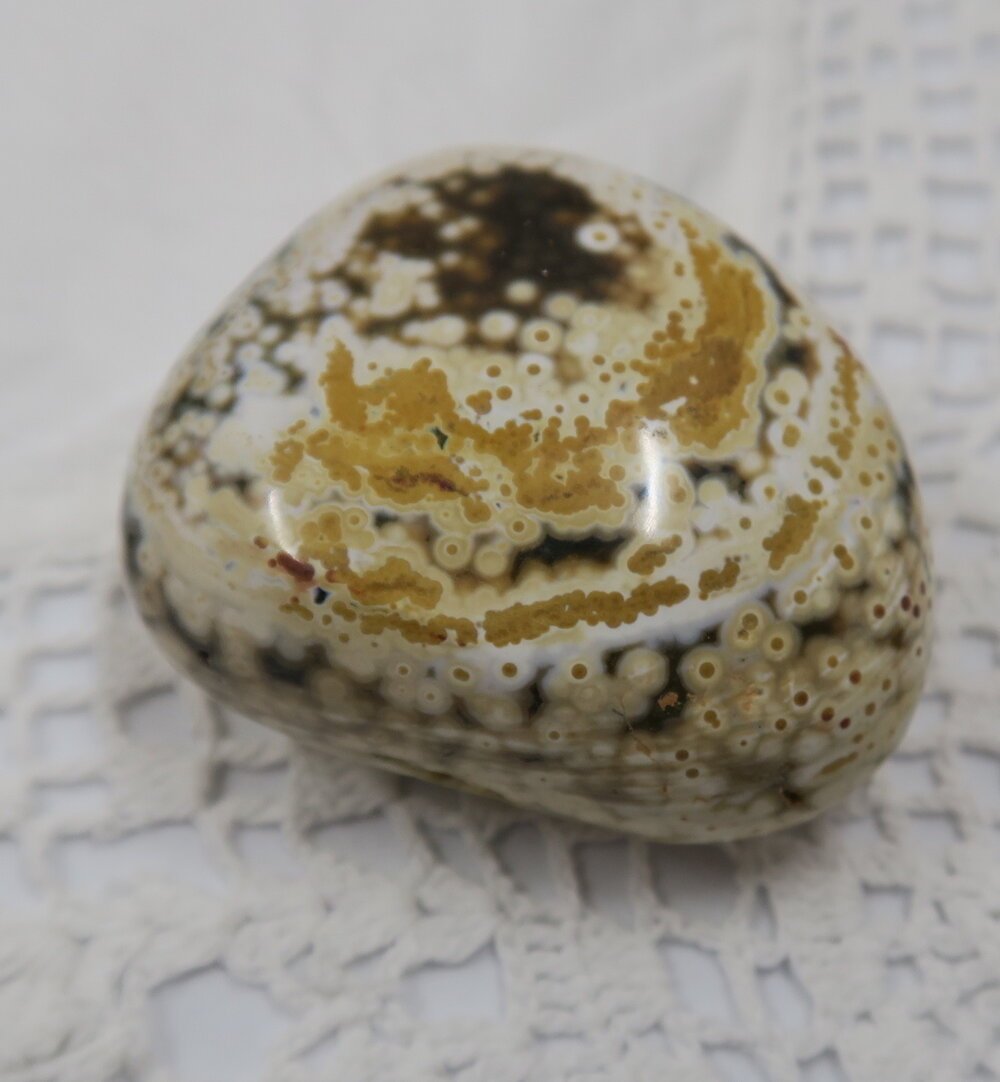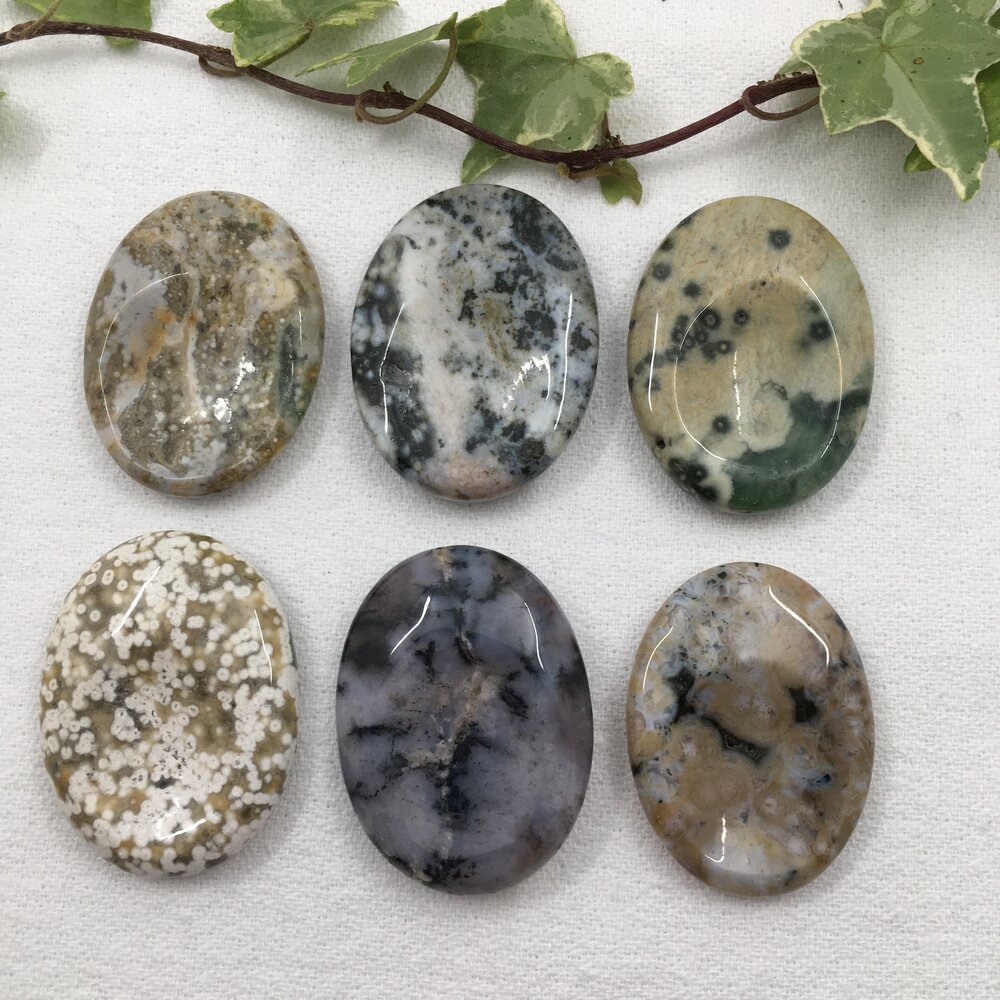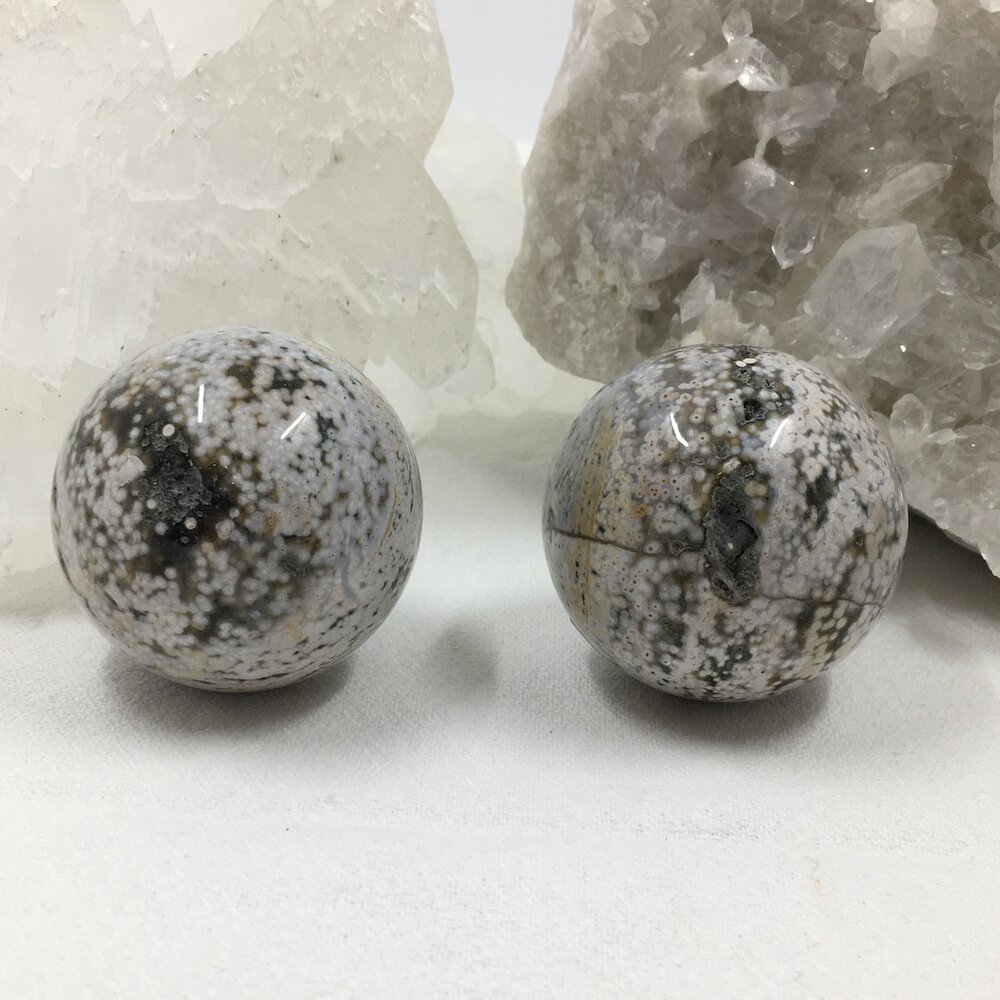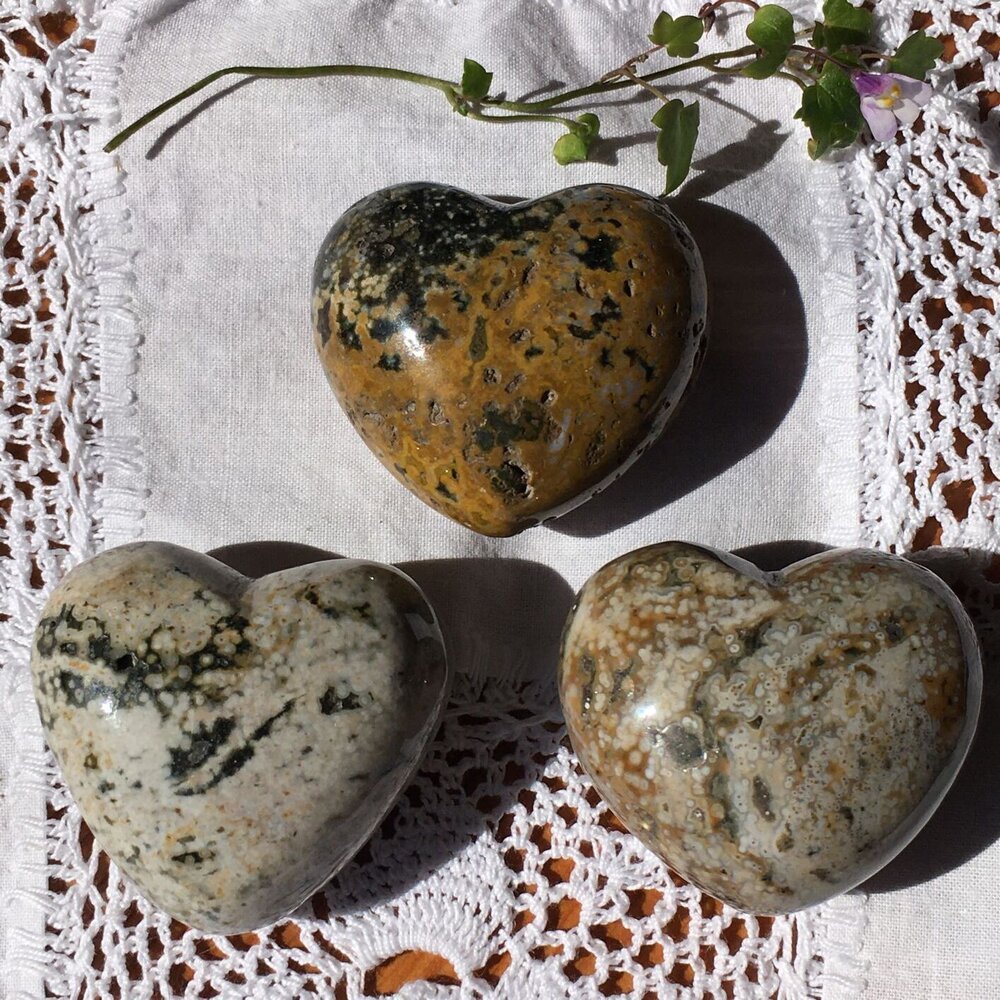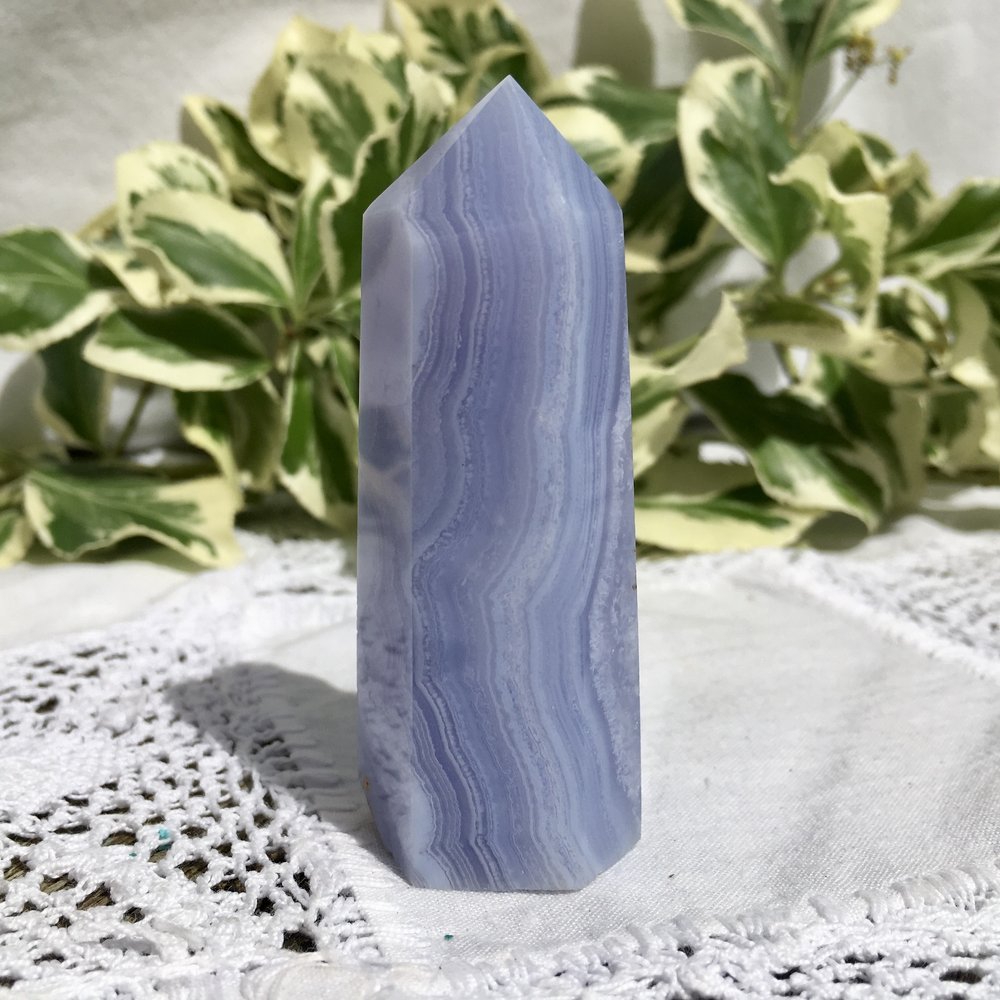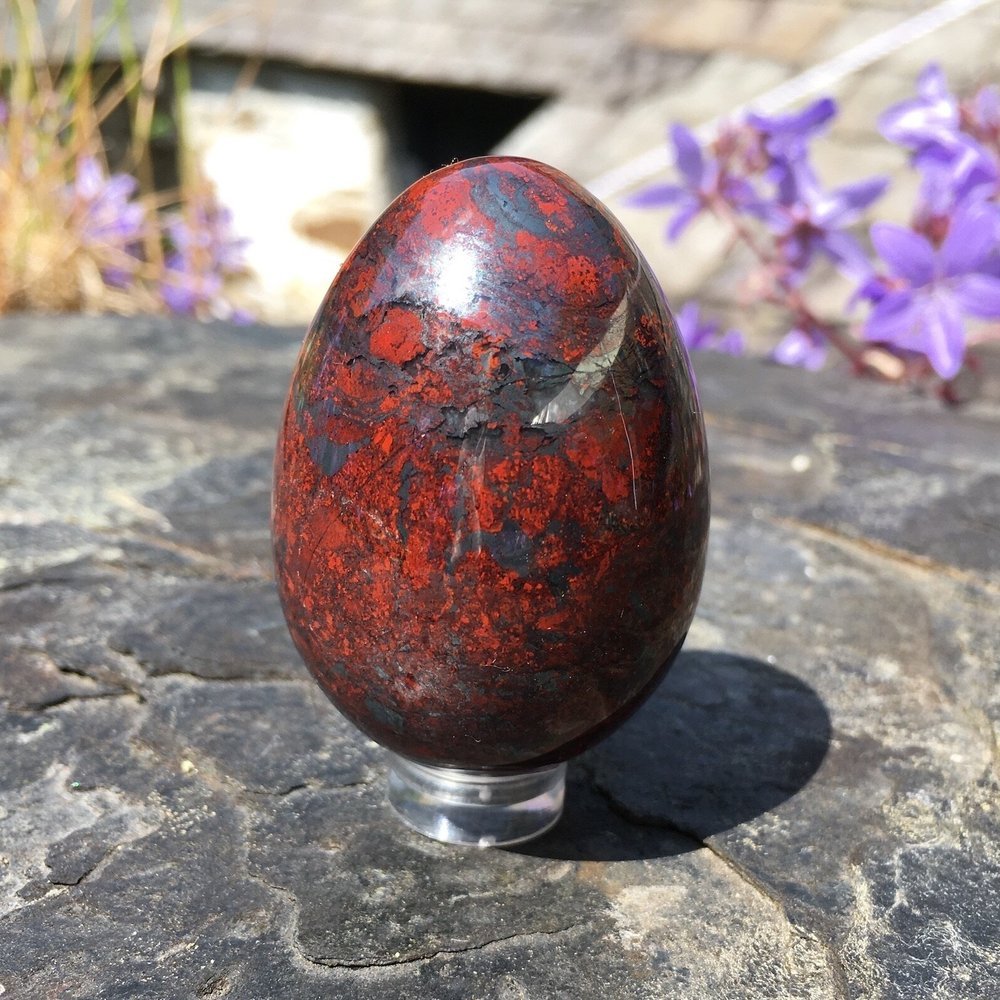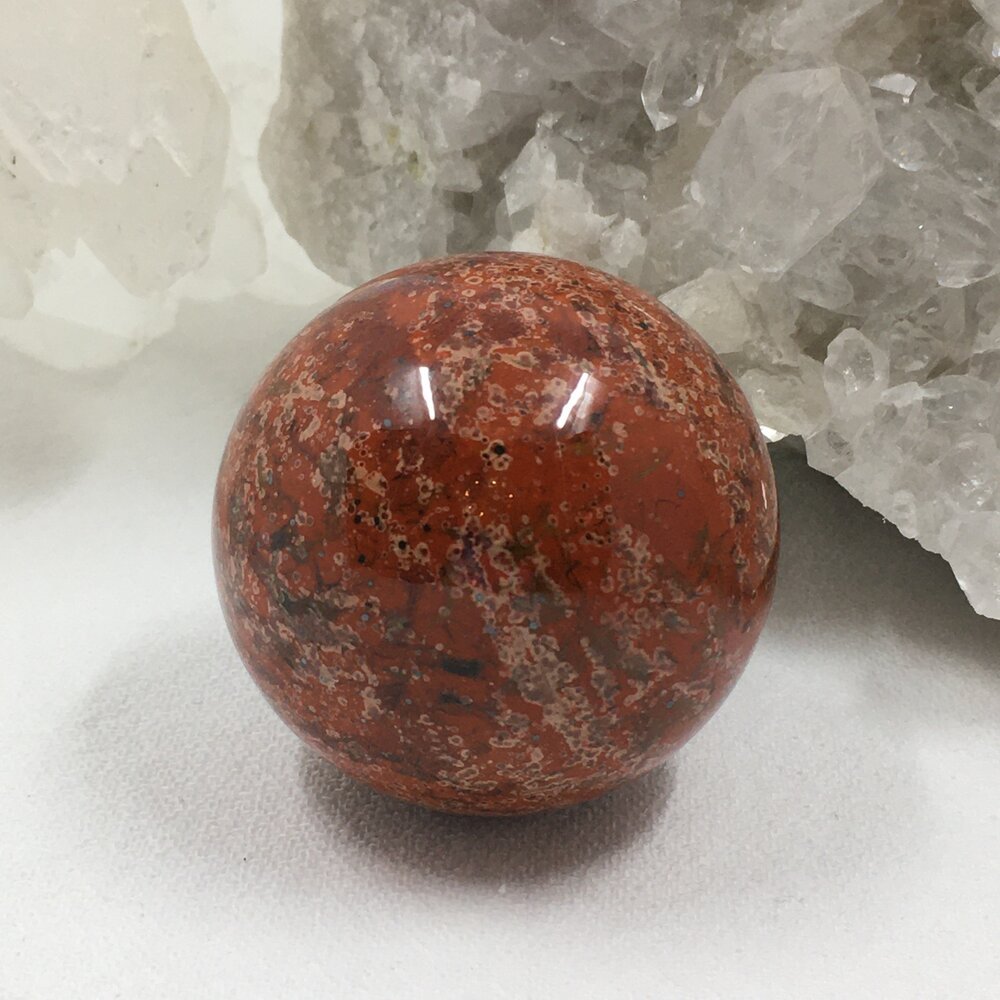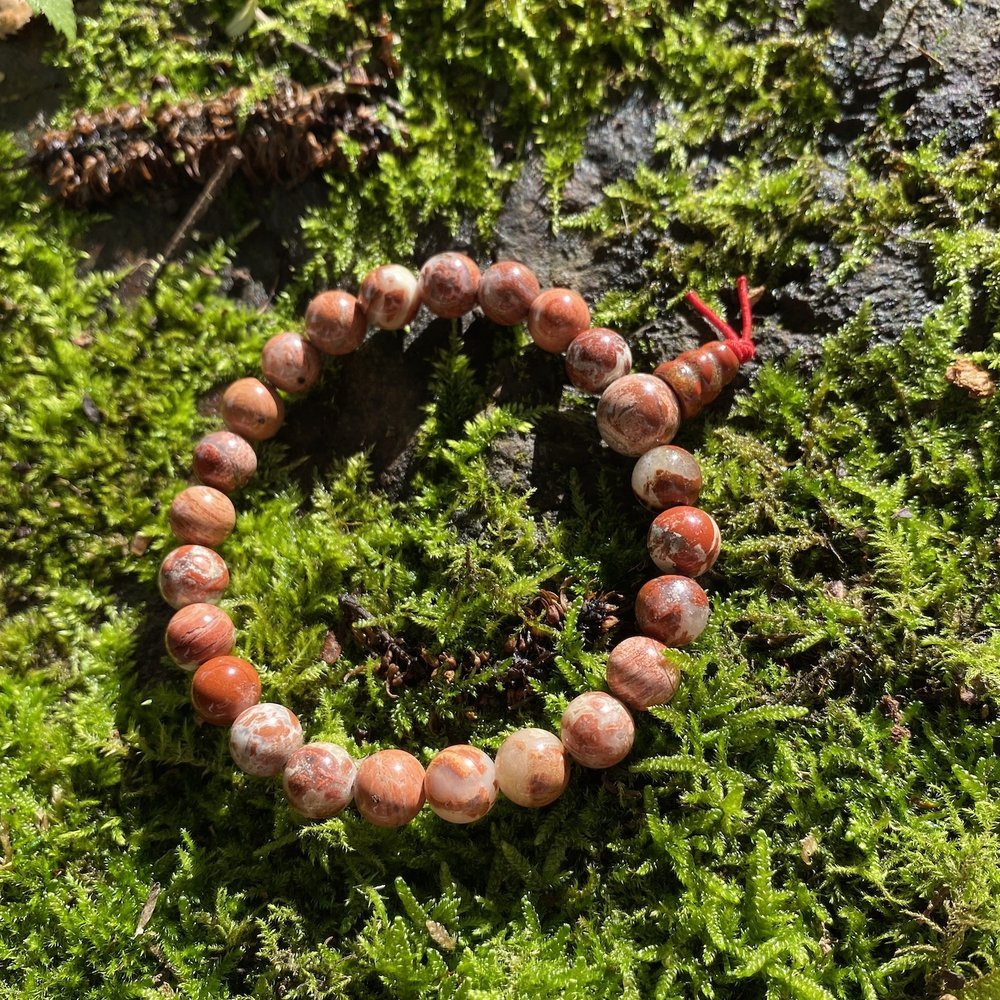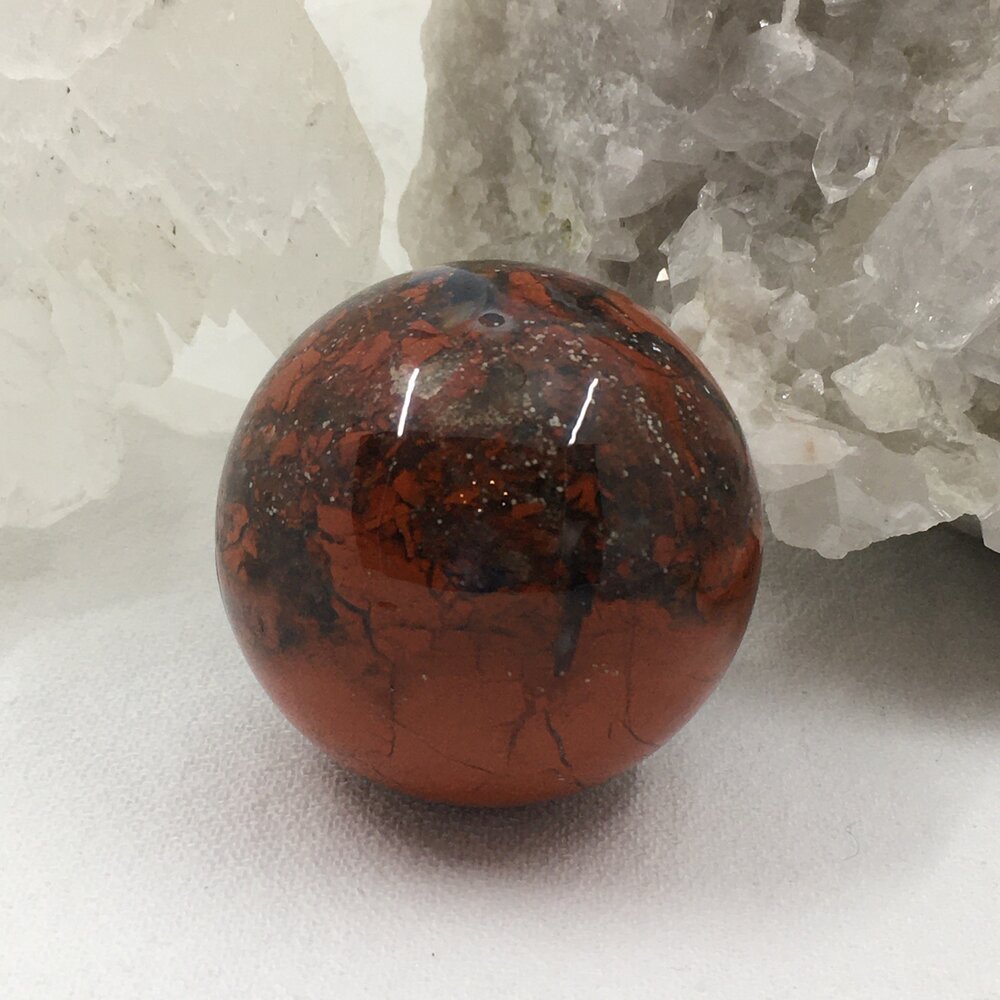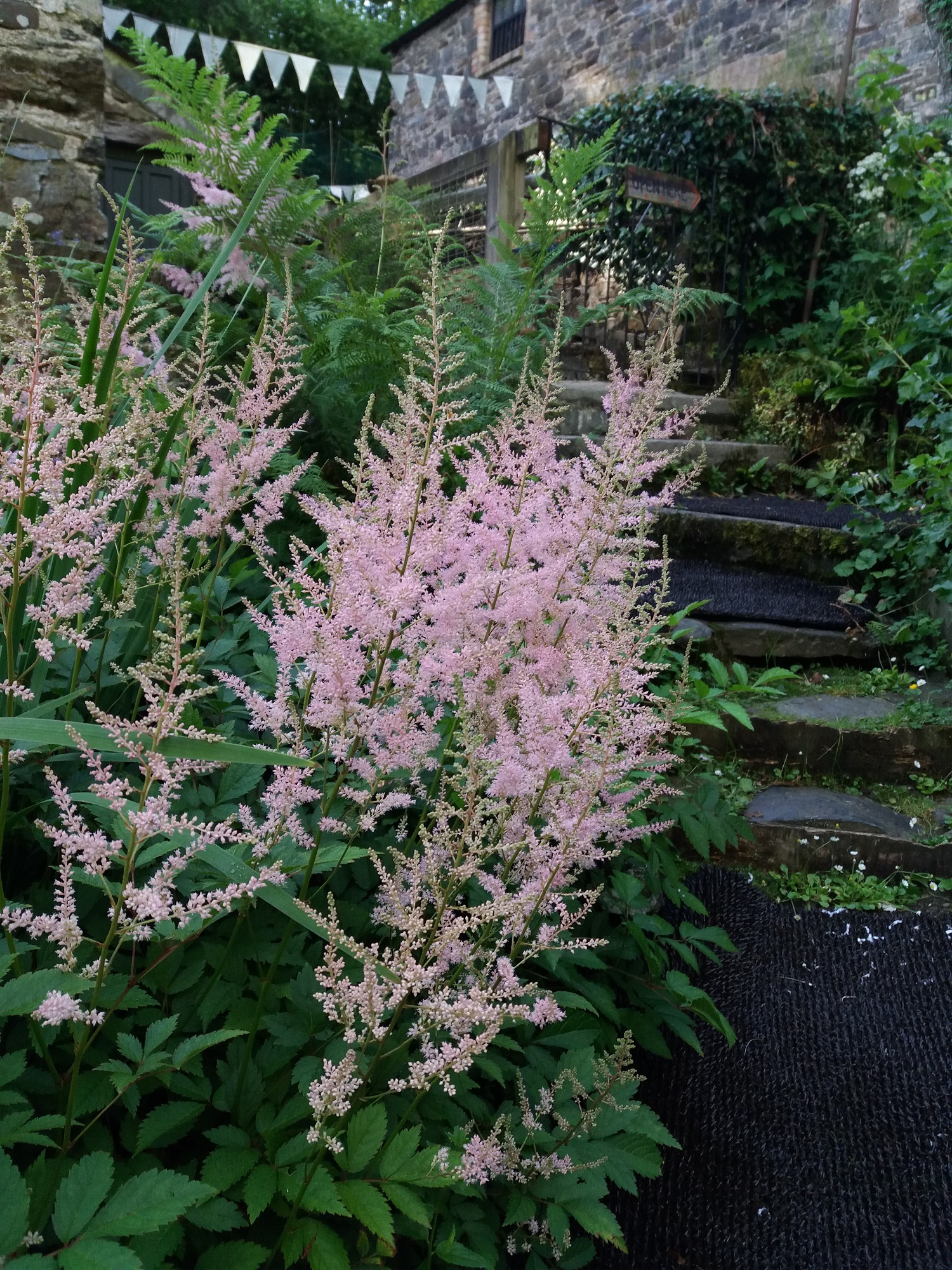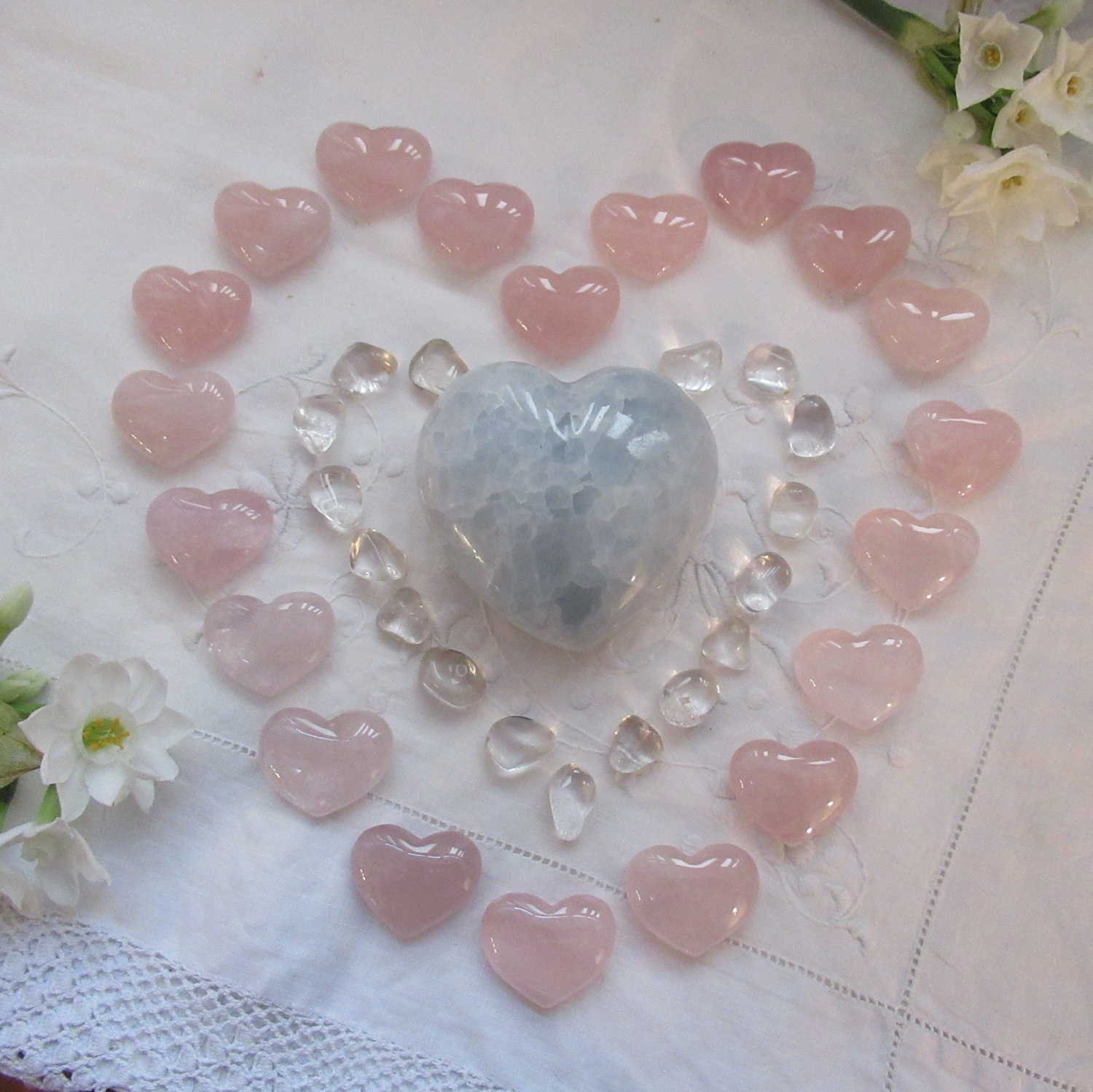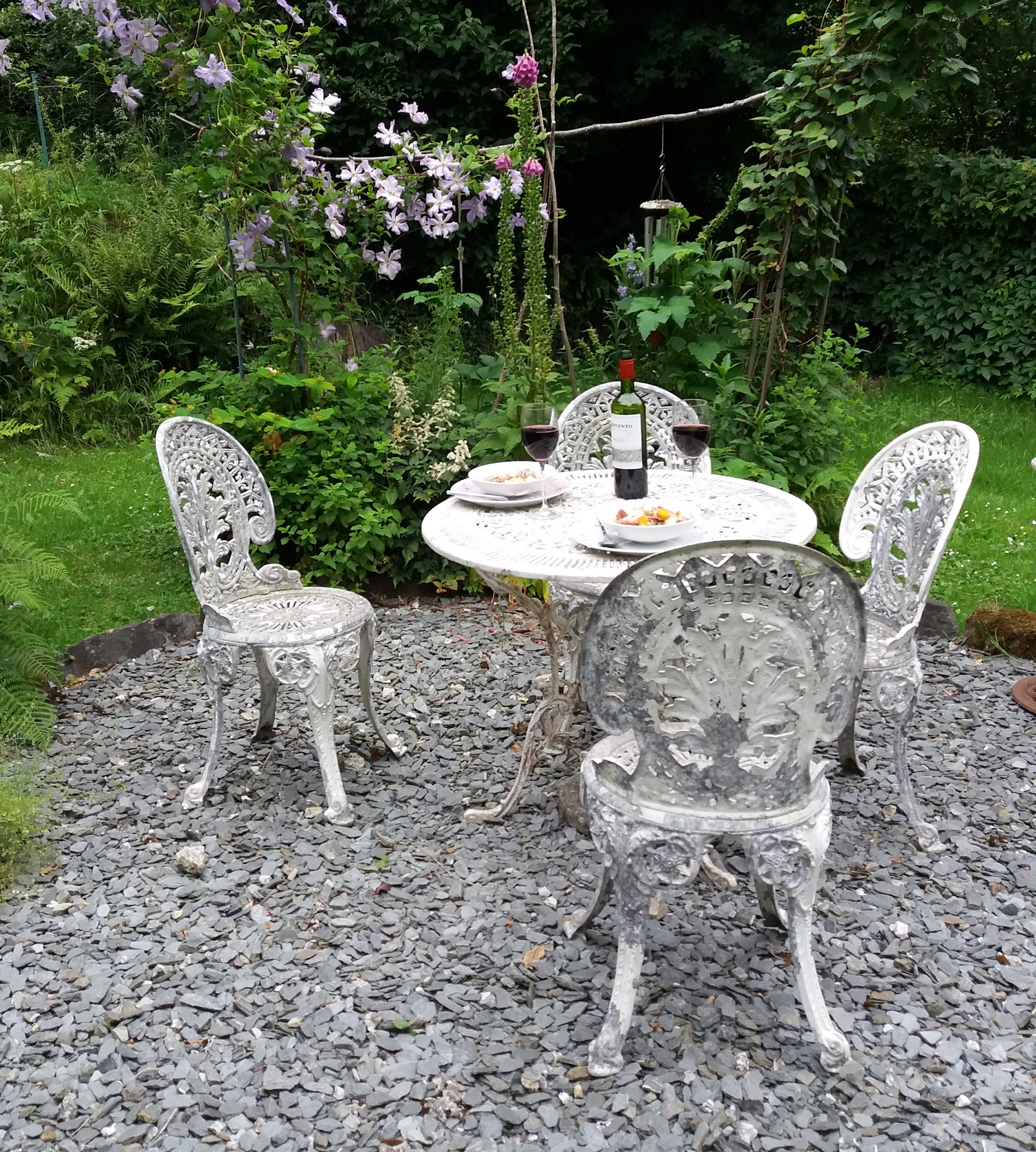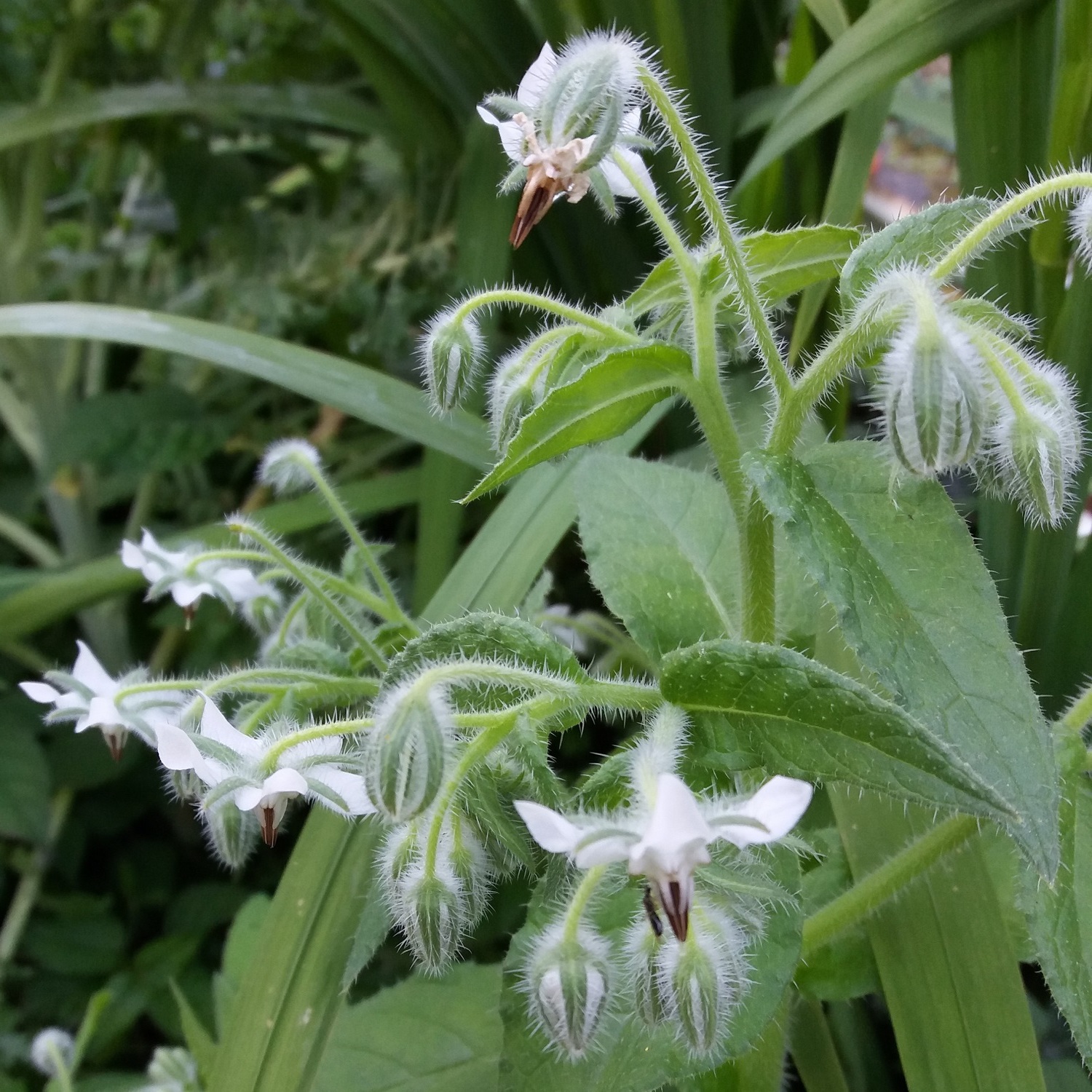The other day I posted a collage of some rather lovely Polychrome Jasper hearts and someone asked me:
“How can you tell this Jasper from the Ocean Jasper? Sometimes it's hard to know what we're getting out there (not speaking about you!!). Thanks.”
I love questions! They make me think, and when I answer them lots of people usually say that they had had the same, or similar, questions.
I thought about how to answer this question and realised that there was actually more than one question and there wasn't a simple answer - so here are some of my thoughts on the question of it being hard to know what we're getting out there. Later I’ll address the question of how do you tell the difference.
I’ll start by saying that if I sell something as Polychrome Jasper, or Ocean Jasper, or anything else, to the very best of my knowledge that is what it is. This knowledge is based on over 30 years of working with crystals and asking lots of questions along the way. It's based on having trusted suppliers and also some really good mineral people who I can telephone with my questions - and I often do call to ask about 'new crystals', especially those with fancy names, extraordinary claims and very high prices.
If I don't know what something is, or am unsure what something is, I always say so. When writing about crystal energy, or 'what a crystal does', I share my own personal experience. If something is new to me and I don't know much about it, I say so.
So - back to ‘it being hard to know what we are getting out there’ - there are several reasons why it can be difficult to know which crystal information is reliable.
Firstly, there's been another huge surge of interest in crystals in recent years. In some ways that is good. To me, as a crystal healer and teacher of many years, it's great to see that more and more people are turning to Mother Nature to take charge of their own healing.
But we live in a profit driven society and many people have seen this surge of interest as an easy way to make money with little or no foundation to build on - no idea of what a crystal is made of or how it is formed, where it comes from, whether it is hard or will scratch easily, whether it is toxic, whether it is good or poor quality, what the energetic properties are. Since it is becoming increasingly normalised and acceptable to lie, there’s no reason not to - especially when profit can be made.
I often get people showing me crystals they've bought from eBay, or other sources, 'for a great price'. Occasionally this does happen, but it's rare. I usually don't have the heart to say that it's cheap because it is very poor quality or even not what it claims to be at all.
What can you do? Ask what the seller’s experience is. They should be able and willing to tell you - and be happy to do so. Ask how long they have been in business and what their interest in crystals is. I know some lovely mineral people who aren't at all interested in healing, but they love stones! Where people speak of healing properties, find out what their experience as a healer is. If they are just repeating what they have read from someone else’s experience, they should tell you.
You can use this as an opportunity to hone your discernment abilities. And if something seems to good to be true, it probably is.
Secondly, the massive increase in the 'spiritual market' again has both positives and negatives. Any true awakening has to be good - one might say imperative for our future on Planet Earth. Sadly the 'New Age' has birthed as much utter rubbish as gold - and one example is where there is an emphasis on moving away from the body/Earth.
I meet many people who do not want to know about the physicality of their stones and crystals. Intuition and feelings are considered to be 'spiritual’ and somehow superior. This is no less imbalanced than having a total focus on the material plane and excluding spirit. The physicality of a crystal embodies the crystal spirit, and is an expression of that, and at the very least it will inform you about whether your crystal will be damaged by cleansing it in water or salt.
Ask what the crystal is made of, e.g. iron, silicon, sulphur and where the crystal came from. (Increasingly I forget the latter, but if I have forgotten I'll tell you!) Ask how you can cleanse it and if it is easily scratched or sensitive to light.
Thirdly, the whole field of 'expertise' in the field of crystals is confusing. There's a long history of humans working with crystals, but the recent reawakening really took off about 50 years ago. A small number of people started to meditate with crystals and compare notes. A very small number wrote some excellent books. A combination of ancient crystal lore and the results of these early experiments led to what has now become a body of 'crystal facts' regarding 'what crystals do'.
This is a huge oversimplification, but it has led to lots of very mediocre and some truly terrible crystal books and endless online opinions presented as facts. Recently I came across a crystal that was new to me. I'd heard of it but not seen it until I met the man who discovered it. I asked him about the chemical composition, and he told me that, as yet, testing had been inconclusive. That hasn't stopped 'crystal experts' being very sure about the composition and stating unsubstantiated 'facts' about it online.
Oversimplifying things gives crystal healing a bad name, but it enables the creation of neat packages that can become saleable items! And that leads to crystal courses, but that's for another time. Suffice it to say that just about anyone can be a crystal expert these days, with little or no training or experience so ask questions. Ask lots of questions!
If people are describing healing properties, ask how they know that. Ask about their experience of working with crystals as healing tools. Do they truly know their crystals or are they just another commodity? Anyone with true experience and knowledge will be very happy to share this with customers.
jasper
Now to the specifics of Ocean Jasper vs Polychrome Jasper.
Jasper is the name given to a variety of chalcedony or microcrystalline chert - though, confusingly, some stones that are not actually chalcedony are called Jasper! More on this later.
Chalcedony is the name given to all varieties of quartz that are made up of microscopic crystals - also called microcrystalline or cryptocrystalline Quartz. Unlike crystals or clusters of crystals that you can see, Chalcedony is made up of many very tiny crystals that are too small to see. Examples that you might have heard of are Blue Lace Agate, Bloodstone, Red Jasper, Brecciated Jasper, Chrysoprase.
Whereas micro or cryptocrystalline Quartz is made up of many very tiny crystals that are too small to see with the naked eye, here you can see single Quartz crystals. These have formed in the shape that you see. They have not been cut or polished into that shape. They are single, individual crystals rather than many tiny ones joined together.
Chert was mentioned above. Chert is a fine grained rock that is composed of chalcedony with various 'impurities'. Flint is a type of Chert.
ocean jasper/orbicular jasper
Ocean Jasper is the marketing term given to a type of Orbicular Jasper found only in north west Madagascar.
Orbicular Jasper is actually a type of Rhyolite rock or Tuff rock that has orbicular or spherical patterns of Quartz and Feldspar - so it isn't a true Jasper!
Orbicular Jasper occurs in different locations in the world. e.g. USA, Australia, Bulgaria. Serbia, Russia. Californian (Morgan Hill, Santa Clara County) Orbicular Jasper is mainly red and yellow and is known as Poppy Jasper.
ocean jasper
Ocean Jasper is so called because the location where it was found is beneath the sea at high tide. The original location has not been mined for some time now, but small new sources have been found since.
It is very beautiful and is often used for decorative purposes. It comes in many colours, including ivory white, pale to dark green, pink, red, brown with amazing patterns and lots of spots.
All our Ocean Jasper comes from trusted suppliers who work solely, or mainly, with Madagascar. The truth is that, unless I personally go to a mining location, I can never be 100% sure of accuracy, but all the people I work with have been in business for a long time and I trust them.
In common with many Jaspers, it is supportive and protective. It is also calming and brings a sense of well-being. I feel that it works especially with the Heart and Earth Star chakras. From this calm, supported, protected space, we are more able to accept who we are, and express who we truly are more confidently, and without self-judgement, out into the world.
I have found that it has been very helpful for people who have angina. Please be aware that I am not suggesting that this stone is a cure for angina, but from the first time a student noticed and reported a real improvement, I have experimented with it many times.
Several years ago I bought lots of very pretty small raw pieces of Ocean Jasper and they have been coming out a bit at a time. I thought they’d all gone but then I found more hiding away in one of my ‘get to it later’ boxes. I’ve made them into small grid sets but they haven’t yet made it to the shop. If you are interested in a set like these, let me know.
polychrome or desert jasper
Polychrome (literally poly/many and chrome/colour) Jasper was discovered in 2006 in Madagascar when searching for new sources of Ocean Jasper. Also known as Desert Jasper, Polychrome is a variety of Chalcedony with beautiful patterns of Cream, Brown, Red, Orange, Pink, Purple, Blue.
Like all Jaspers, Polychrome is stable, grounding and long-acting. It helps us to connect with Mother Earth at a deep level – not the soil and plants close to the surface, but the deep rooted rocky depths. As well as embodying the Earth element, Polychrome also has Fire and it brings energy, vitality and a passion for creativity.
One thing that I find fascinating is that it has a particularly lovely texture and feels much smoother than most Jaspers/Agates. It is very silky and sensuous to hold and stroke.
We only buy Polychrome Jasper from one supplier who works solely with minerals from Madagascar.
Both of these stones are good gifts for those who ‘don’t do crystals’ because they are visually very attractive and interesting.
Thankyou for your questions and for inspiring this blogpost! Keep the questions coming ❤️
Some recommendations:
Some books that I like ❤️
Anything by Katrina Raphael
Anything by Sue and Simon Lilly
Michael Gienger - Crystal Power, Crystal Healing - quite left brain, but an interesting approach (I’m not keen on his later books)
These books may be quite old but the authors all work with crystals and have many years experience
Other shops with people I know, trust and love ❤️
Aristia - Michael Eastwood - lovely man with some really beautiful pieces
Rebel Angel - Janelle Scialla - lovely woman who also writes some good stuff

